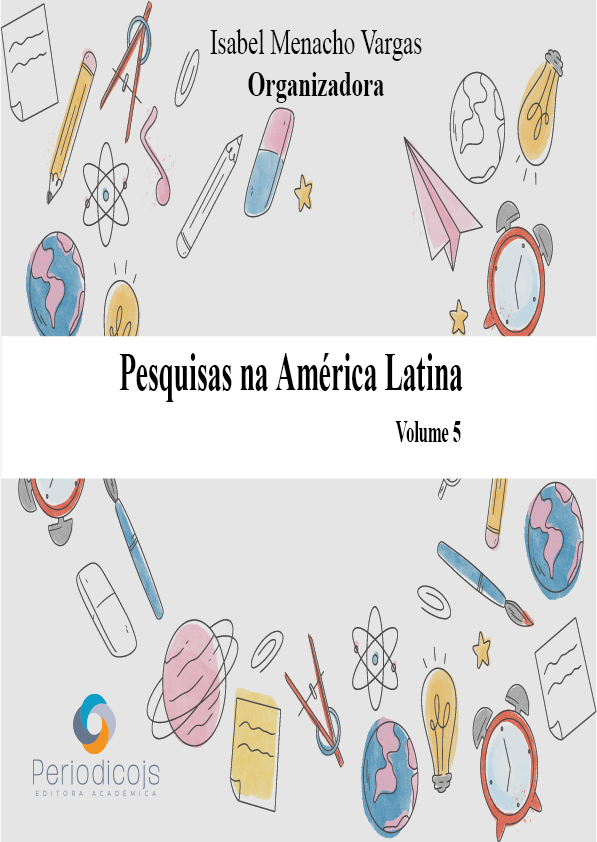Abstract
The general objective of the research is to determine the relationship between classroom management and the achievement of communication skills in sixth grade students of the Isaías Ardiles Educational Institution in the Pachacamac-Lima district. The study was of a basic type, non-experimental, correlational and cross-sectional design. The sample was census and was made up of 126 teachers from that institution; The applied technique was the survey, the instrument was a questionnaire and a communication test for the students, it was validated through the judgment of three experts and its reliability was determined by the Cronbach's Alpha coefficient (0.892) and KR20 (0.925). According to the results obtained, they show that the studied variables have a direct and significant correlation in the sixth grade students of the Isaías Ardiles Educational Institution of the Pachacamac district, since a Spearman Rho = 0.717 was obtained, and p =, 000 <.05. Likewise, the dimensions of the achievement of competences in the area of communication: communicates orally in their mother tongue, reads various types of texts in their mother tongue and writes various types of texts in their mother tongue, have a direct and significant relationship with management of the classroom (Spearman's Rho equal to 0,387, 0,023, and 0,347 respectively), which denotes the importance of the teacher as a classroom manager for educational quality, achievement of objectives and improvement of students' academic performance.
References
Carranza (2017). La gerencia del aula y su influencia en el aprendizaje de los estudiantes del V ciclo de la carrera de diseño gráfico del Instituto Avansys Lima – 2015. Universidad Nacional de Educación Enrique Guzmán y Valle. (Tesis de Posgrado). Disponible en: http://repositorio.une.edu.pe/handle/UNE/1488
Castellanos, E. (2006). Gerencia de aula y estrategias de aprendizaje. Recuperado de: https://www.quieroapuntes.com/gerencia-de-aula-y-estrategias-de-aprendizaje.html.
Chacón y Arámbula. (2017). La gerencia de aula en la escuela primaria ante los desafíos de una educación creativa e innovadora para erigir una cultura de calidad. Saber. 29, (641-649). Disponible en: https://www.researchgate.net/publication/322329207_la_gerencia_de_aula_en_la_escuela_primaria_ante_los_desafios_de_una_educacion_creativa_e_innovadora_para_erigir_una_cultura_de_calidad_primary_school_classroom_management_before_the_challenges_of_crea
Emmer, E., & Stough, L. (2001). Classroom management: A critical part of educational psychology, with implications for teacher education. Educational Psychologist, 36 , 103–112. doi: 10.1207/S15326985EP3602_5.
Giles, García y Cervantes. (2021). University students’ classroom management in a proposal of service learning in physical education in learning communities. [Gestión de Aula del alumnado universitario en una propuesta de Aprendizaje Servicio en Educación Física en Comunidades de Aprendizaje] Retos, (39), 224-230. doi:10.47197/retos.v0i39.78547
Hernández, R; Fernández, C. y Baptista, P. (2014). Metodología de la investigación. México: McGraw-Hill / Interamericana S.A.
Hernández y Mendoza. (2018). Metodología de la investigación. Las rutas cuantitativa, cualitativa y mixta, Ciudad de México, México: Editorial Mc Graw Hill Education, ISBN: 978-1-4562-6096-5, 714 p.
Hymes. (1972). "On communicative competence". Sociolinguistics. Eds. Pride, J.B. y J. Holmes. Londres: Penguin Books. 269-293. Disponible en: http://wwwhomes.uni-bielefeld.de/sgramley/Hymes-2.pdf
Luján. (2017). Gestión educativa y desempeño docente del nivel secundario en las Instituciones Educativas RED 26 UGEL 04 - Comas 2016. (Tesis de Posgrado). Universidad Cesar Vallejo. 120 pp. Disponible en: https://repositorio.ucv.edu.pe/bitstream/handle/20.500.12692/8379/Lujan_VRE.pdf?sequence=1&isAllowed=y
MINEDU. (2017). Currículo Nacional de la Educación básica. Programa curricular del nivel Secundaria. Primera edición. Lima, Perú. Disponible en: http://www.minedu.gob.pe/curriculo/pdf/curriculo-nacional-2016-2.pdf
Pardo. (2018). Desafíos de la gestión de aula. Ficha VALORAS. Disponible en Centro de Recursos VALORAS: www.valoras.uc.cl.
Quispe. (2020). La gestión pedagógica en la mejora del desempeño docente. Rev. Investigación. Valdizana. 14(1), 7-14. https://doi.org/10.33554/riv.14.1.601
Ribés, García y Miravet. (2019). Inclusive classroom management through the project LÓVA: The opera as a vehicle for learning. [Gestión del aula inclusiva a través del proyecto LÓVA: la ópera como vehículo de aprendizaje] Revista Electronica Complutense De Investigacion En Educacion Musical, 16, 3-19. doi:10.5209/reciem.62101
Rodríguez. (2017). Gestión de aula y el logro de competencias del área comunicación en estudiantes del nivel primaria. (Tesis de Posgrado). UNIVERSIDAD NACIONAL MAYOR DE SAN MARCOS. 177 pp. Disponible en: https://cybertesis.unmsm.edu.pe/bitstream/handle/20.500.12672/7287/Rodriguez_hm.pdf?sequence=1&isAllowed=y
Romero, Julca, Pérez y Delgado. (2019). El docente como gerente y la calidad de los procesos educativos en el aula de un colegio policial de la provincia constitucional del Callao, Perú, 2018. Revista Científica Y Tecnológica UPSE, 6(1), 66-72. https://doi.org/10.26423/rctu.v6i1.446
Scheerens, J. (1990). School effectiveness research and the development of process indicators of school functioning. School Effectiveness and School Improvement, 1(1), pp. 61-80.
Stringfield, S. y Slavin, R.E. (1992). A hierarquical longitudinal model for elementary school effects. En B.P.M. Creemers y G.J. Reezigt (Eds.), Evaluation of educational research (pp. 35-69). Groningen: ICO.
Tobón. (2013). Formación integral y competencias. Pensamiento complejo, currículo, didáctica y evaluación. 4ta edición. Bogotá: ECOE. Disponible en: https://issuu.com/cife/docs/libro_formacion_integral_y_competen
Valente, Lourenço, Alves y Domínguez. (2020). The role of the teacher's emotional intelligence for efficacy and classroom management. [El papel de la inteligencia emocional del profesor para la eficacia y la gestión del aula] Revista CES Psicologia, 13(2), 18-31. doi:10.21615/CESP.13.2.2





